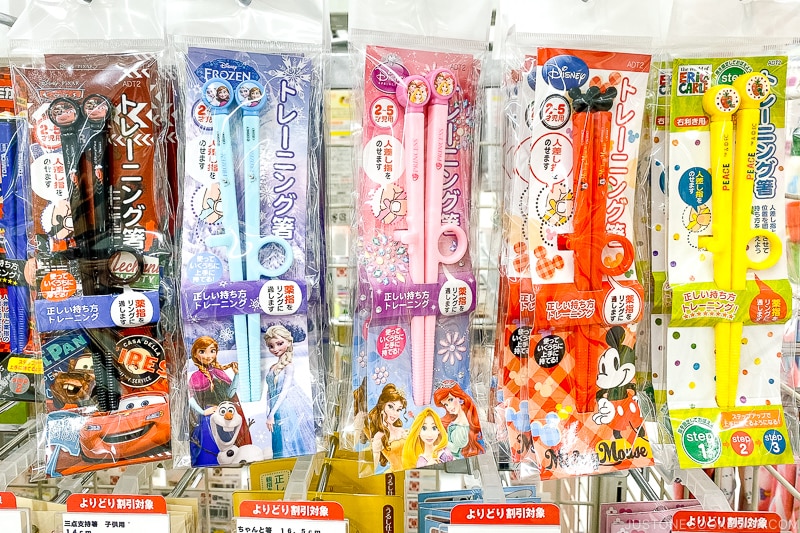Over the years, we have received countless requests for information on baby food in Japan! As a mom based in Tokyo with almost two years of feeding my always-hungry little, I have some insight into what it’s like to feed Japanese food to my child. In part 2, I’ll be answering readers’ questions. So, without further ado, let’s get started! 💁🏻♀️ As mentioned in the previous post, please note that I am not a nutritionist, dietician, or expert in the field of baby food. For those who wish to introduce Japanese foods to your baby/child, please do your research, vet your sources, and consult your pediatricians.
Q. Do you have any recommendations for baby food recipe books and videos?
For all-rounder recipe books, I recommend:
最新! 初めての離乳食新百科 最新版らくらくあんしん離乳食 マンガでわかる! 離乳食はじめてBOOK 最新改訂版 らくらくあんしん離乳食
Please check the publication date for the most up-to-date versions. Books published after 2019 should have the latest MHLW updates regarding food allergens. For videos, I found YUCa’s Japanese Cooking to help give a solid introduction to Japanese baby food. She posts recipe videos in English for pregnancy-stage baby and toddler foods. You can also check out recipes on her blog YUCa’s Japanese Cooking.
Q. When can I introduce sake, mirin, and miso to my baby?
The MHLW recommends waiting until the 9-11 months to introduce mirin and sake to babies. However, the guideline suggests avoiding serving it to babies if possible due to the high sugar content. If you’re cooking with sake/mirin for your family and serving a portion for your baby, make sure to cook off the alcohol well. For those concerned, you could swap with non-alcoholic mirin (みりん風調味料), water, or dashi. Miso can be introduced during the 7-8 month period, but as it is high in salt, try introducing your baby to miso soup first since it’s more bland. Also, avoid miso-marinated meat or fish, as it can be pretty salty.
Q. What utensils do parents use when feeding their babies?
Parents usually use a fork and spoon to feed their babies. Japan has many choices, many of which come with plastic cases. This helps keep the utensils clean when traveling or going out.
Q. When do Japanese children start using chopsticks?
Japanese children usually start using chopsticks around 2-3 years old. They typically start with trainer chopsticks to practice their motor skills until they can hold chopsticks on their own, around 5-6 years old. Like many other Asian countries, chopsticks are children’s main utensils for eating (forks and spoons are also used). Proper use of chopsticks is crucial when children enter elementary school, as school lunches are often eaten with chopsticks. Improper use of chopsticks may get a reprimand by the teachers, and poor handling of chopsticks is often blamed on bad parenting (whether it’s true or not). Thus, many parents make sure their little ones can properly hold their chopsticks by the time they start school.
Q. Is it culturally acceptable to feed baby food in public?
For the most part, it’s acceptable to feed baby food (store-bought or homemade) in public, such as at parks, entertainment facilities, food halls, and malls. Some family-friendly restaurants may even provide store-bought baby food. If unsure, you can always observe the other parents around you or ask the service staff.
Q. Are parents strict about serving only organic foods to their babies?
I can only speak from my experience and observations of friends; not everyone is stuck to organic foods. But many, including myself, buy fresh produce directly from small-scale farms, many of which practice low-pesticide farming (but are not organic certified). One reason organic food isn’t widely available in Japan may be because, unlike the U.S. and Europe, the agriculture sector in Japan is primarily small-scale and family-owned. Thus, the organic certification is costly for them to shoulder. The organic food selection at supermarkets tends to be limited and expensive for everyday meals.
Q. What are the major brands of Japanese baby food?
Q. Where can I purchase Japanese baby food products in the U.S. or outside Japan?
An easy way to introduce Japanese food to your baby is to modify everyday Japanese food products at the Asian/Japanese supermarket, such as rice, udon, somen, tofu, and dashi.
Q. Until what age do Japanese mothers breastfeed their babies?
Most pediatricians in Japan follow the WHO recommendation of breastfeeding up to 2 years of age or beyond. According to a 2021 poll conducted by an online baby retail store, 41.2% of mothers responded that they stopped breastfeeding around the one-year – 1-year 6-month mark, followed by 32.3% of mothers stopping between 6 months – 1 year.
Q. Are there regional differences in baby food?
In general, the MHLW guidelines apply to all regions of Japan; however, as there are regional differences in ingredients such as miso, dashi, noodles, vegetables, and more, as well as local cuisines, the baby food prepared by parents in Hokkaido may differ from the baby food in Fukuoka. Thank you for reading! I hope you found this two-part piece insightful. If there are any questions I didn’t manage to address, please feel free to ask in the comments below, and I’ll do my best to answer 🙂









